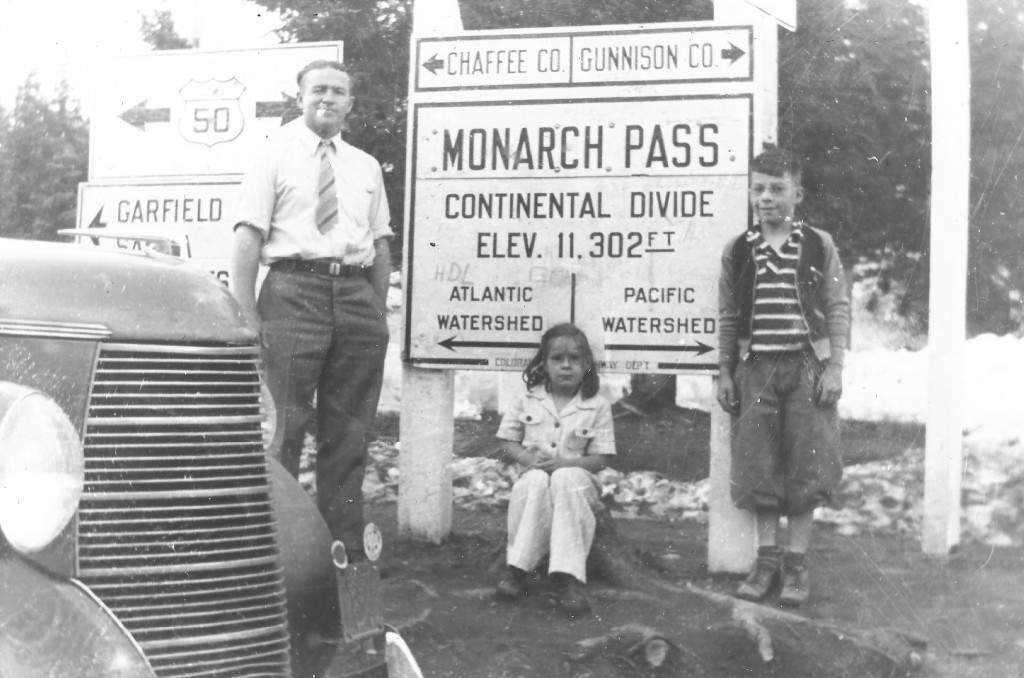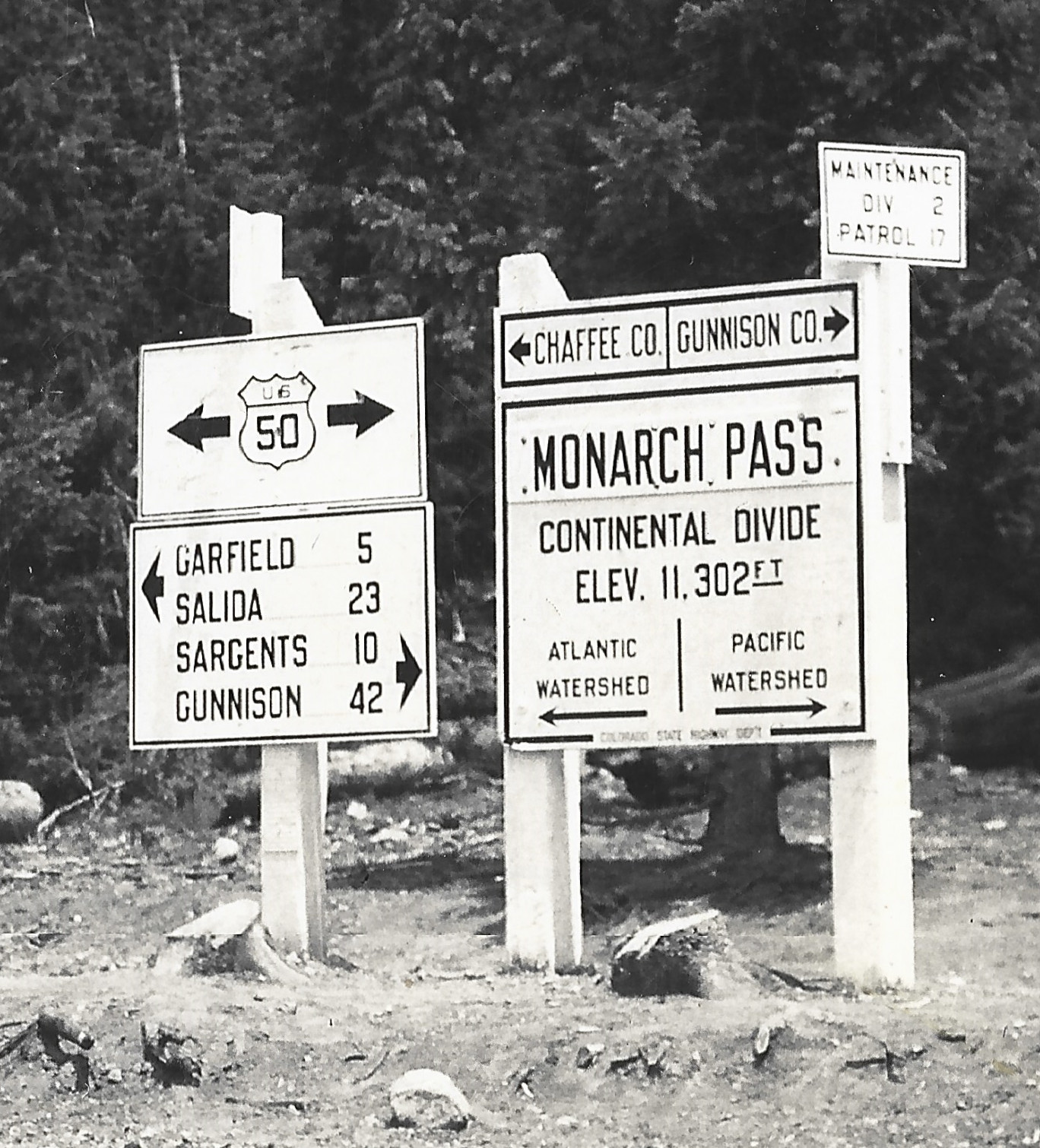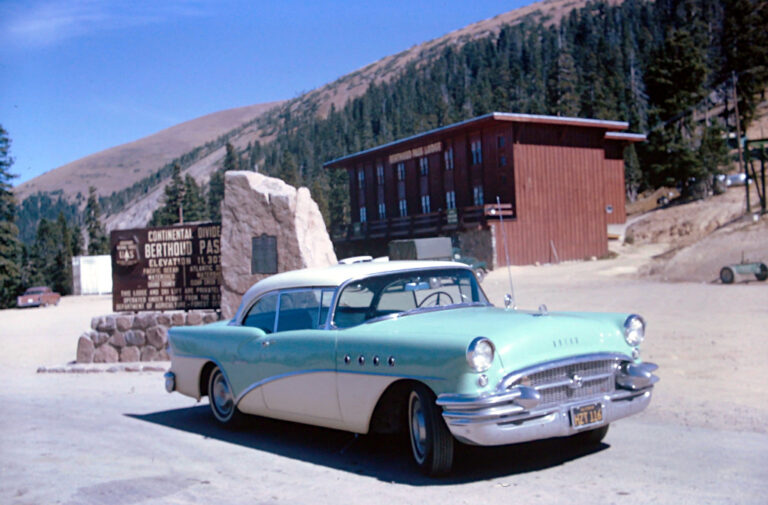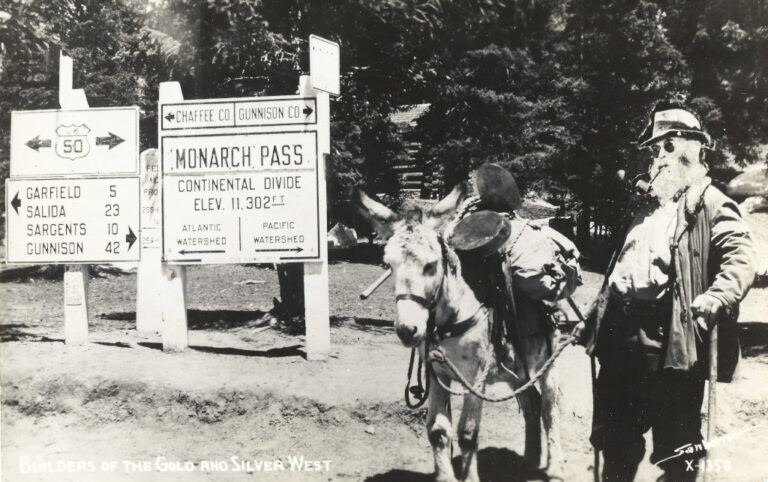Monarch Pass Continental Divide Sign Photograph #CMO-697J
Info
- Date: Early to Mid-1940s
- Photographer: Unknown
- Medium: Original Photograph
- Size: 4 1/2" x 3 1/8"
- ID: CMO-697J
- Acquisition Date: February 2024
- Repository: Coloradotopia Archives
Scanned with basic cropping, no enhancements.
Image use restricted.
Image Dating Comments
This photograph can be dated based partially on a comparison to other Continental Divide sign photos from the era. This photo was likely captured sometime during the early to mid-1940s.
This archive has another photo from sometime circa 1940 (CMO-ECOLO33). It is clear that some additional erosion occurred between the time these images were captured. This has exposed some of the tree roots that are seen at the feet of the children here. That suggests the featured photo in this conversation was probably captured sometime after CMO-ECOLO33. The graffiti on the sign in this image suggests the same.
The snowpack indicates this was probably a spring season photograph.
Comments & Discussion
This Continental Divide sign was added by the Colorado State Highway Department as this route over the pass was completed. A similar sign was added on Berthoud Pass around the same time.
Notice that the ‘Monarch Pass’ lettering is actually on a panel which is attached to the sign. Below that panel, the name Vail Pass can likely still be seen. Learn why here.
That is a 1938 Studebaker Commander base model shown on the left side. It was referred to as the 1938 Studebaker Six in some ads at the time because it had 6 cylinders. These models can be differentiated from the higher-end Commanders by looking at the headlights. The base model had rounded, non-integrated headlights, while the upgraded versions had integrated headlights that were not perfectly round. The grill pattern and hood ornament are also big clues as to the make and model. Studebaker made a 6-cylinder club sedan as well as a cruising sedan in this year, with the latter having an extended cab that had 3 windows on each side instead of 2.
Full Scan
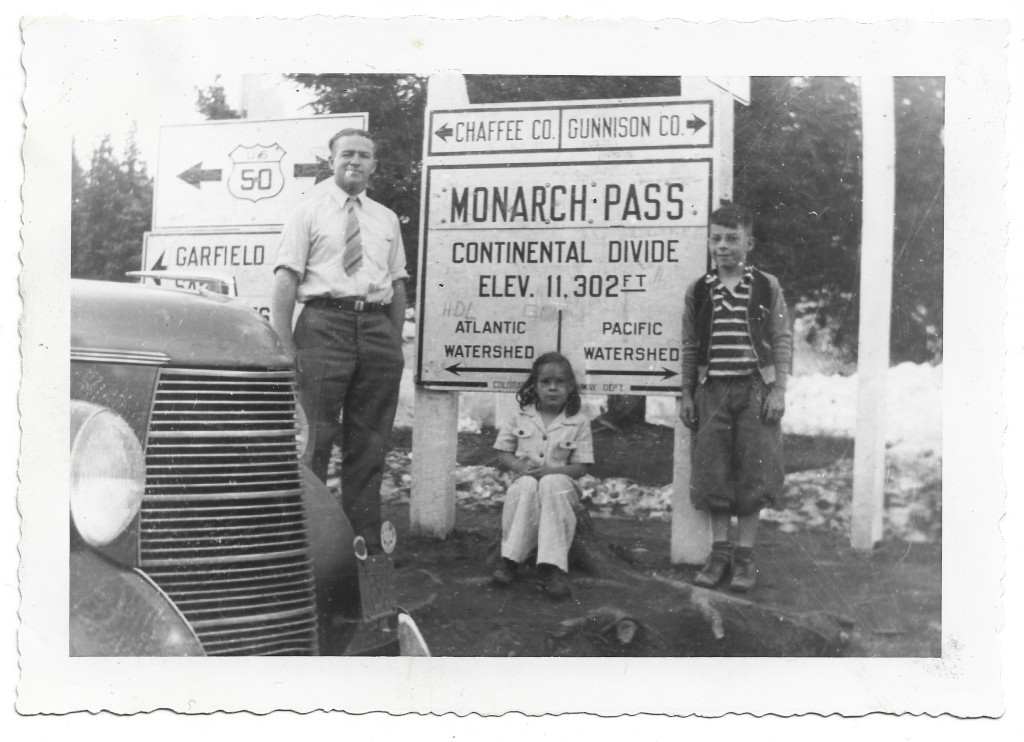
Backside Scan
The backside scan can be seen below with proper orientation. It is the number stamp that is upside down, not the image. The photograph arrived into the archives with the number already stamped.
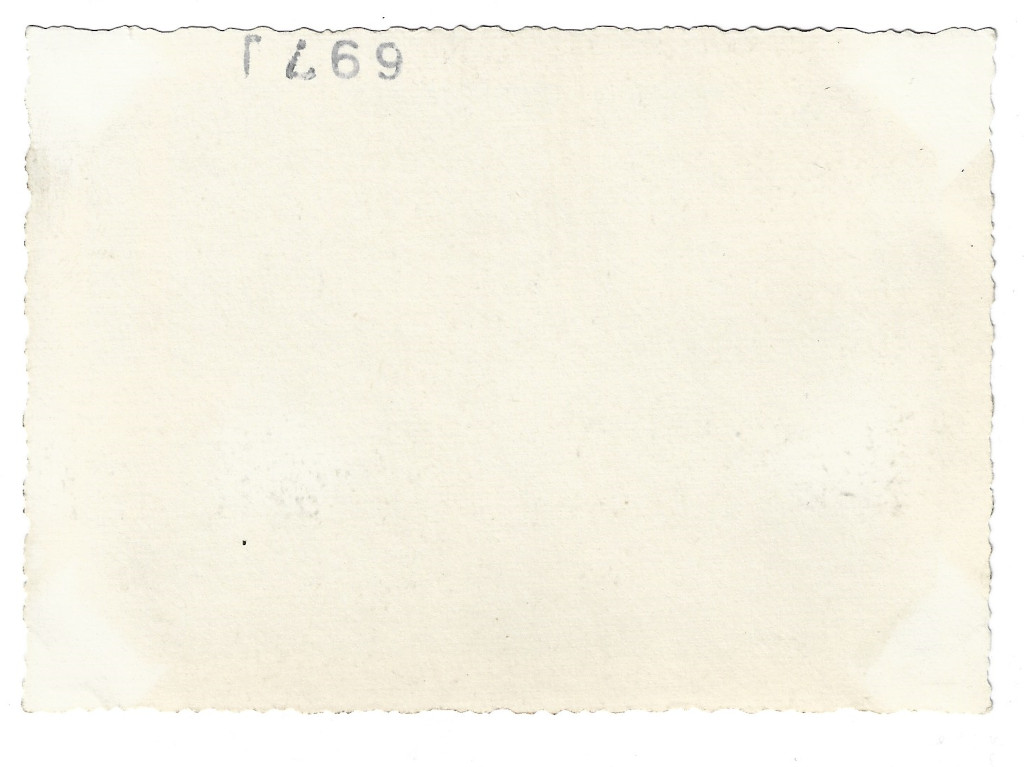
Condition, Aging & Authenticity: The front has retained its glossiness. The areas near the edges have been beaten a bit, but the surface is mostly free of issues. The edges have a ribbed pattern that has seen some wear, but shows that the photo was likely well-cared for in order to maintain this condition.
The backside has some discoloration and signs of aging. The light patterning on the backside’s corners suggests this image was once fixed into an album.
About the Coloradotopia Archives Collection. The Coloradotopia archives hold a large collection of historical images and items that document Colorado’s automobile history in the mountains. You can read more about the collection here.

